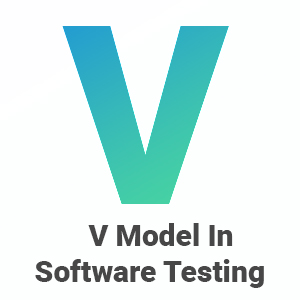


The V-model is an SDLC model, where the execution of processes happens in a sequential manner in a V-shape.
It is also known as the V Model Verification and Validation. Among the many available testing models, the V model in software testing is the most widely used applied, and accepted one. This model allows for a better-quality analysis with less discretionary errors. To overcome the cost and time issue of other software testing systems, V Model has been developed.
V model also known as the verification and validation software model is an SDLC (System Development Life Cycle) and STLC (System Testing Life Cycle) based where the main execution process takes place in a sequential manner of v shape. V model is nothing but the extension of the waterfall model which is based on the association of the development phase and each of the corresponding testing phases. That means there is a direct link between the testing cycle and the development cycle. V model of software testing is a highly specific model and movement to the next only occurs after the completion of the first cycle.
In the V model, the testing phase and development phase are designed in such a way that they are planned parallel to each other. if we take alphabet V there is validation on one end and verification on the other end and the joining point of both is the coding phase.
Verification :
Validation:
1. Large to Small:
In V-Model, testing is done in a hierarchical perspective, For example, requirements are identified by the project team, and create High-Level Design, and Detailed Design phases of the project. As each of these phases is completed the requirements, are definitions become more and more refined and detailed.
2. Data/Process integrity:
This principle states that the successful design of any project requires the incorporation and cohesion of both data and processes. Process elements must be identified at each and every requirement.
3. Scalability:
This principle states that the V-Model concept has the flexibility to accommodate any IT project irrespective of its size, complexity or duration.
4. Cross-referencing:
Direct correlation between requirements and corresponding testing activity is known as cross-referencing.
5. Tangible Documentation:
This principle states that every project needs to create a document. This documentation is required and applied by both the project development team and the support team. Documentation is used to maintaining the application once it is available in a production environment.
Fig: Verification/Static Testing
• Email us – contact@click2cloud.net
• See website – https://www.click2cloud.com/
• Watch our videos: https://www.click2cloud.com/videos-page.php?watch=60
• https://www.click2cloud.com/videos.php
• Past Events: https://www.click2cloud.com/past-events/past-events.php
• Codefest 2021: https://www.click2cloud.com/codefest/
• Read our Blog – https://www.click2cloud.com/blogs.php
• Follow us on Twitter– https://twitter.com/click2cloudinc
• Find us on LinkedIn – https://www.linkedin.com/company/click2cloud-inc-
• Subscribe on YouTube – https://www.youtube.com/channel/UCjVgly_5QMuNZQh2I2FkHQQ